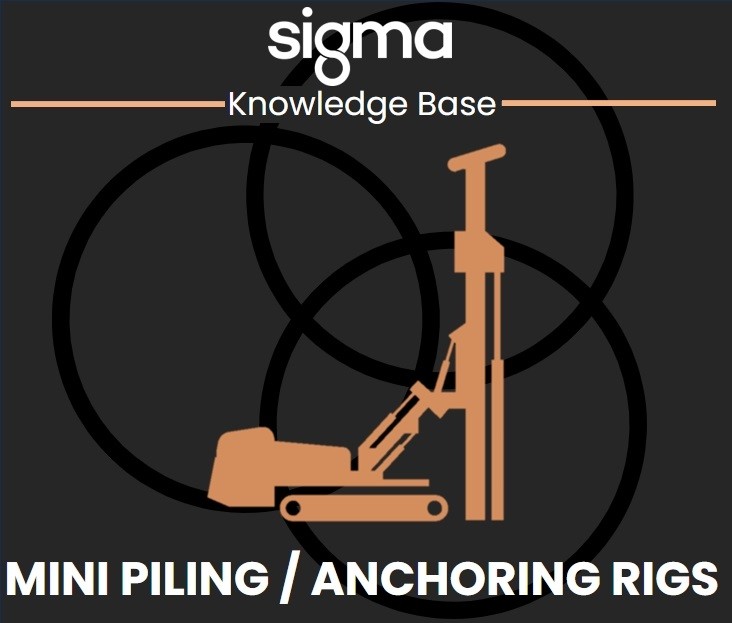
Introduction
In the ever-evolving world of construction and civil engineering, innovative techniques and technologies play a pivotal role in overcoming challenges and pushing the boundaries of what's possible. Mini piling and anchoring rigs are prime examples of such advancements, revolutionizing foundation work and providing solutions for projects where traditional methods may be impractical or insufficient. In this blog, we'll delve into the fascinating world of mini piling and anchoring rigs, exploring their applications, benefits, and the technologies that make them indispensable in modern construction.
Understanding Mini Piling and Anchoring
Mini Piling: The Foundation of Stability
Mini piling refers to the process of creating small-diameter piles to support structures, transfer loads, and stabilize the ground. These piles, often ranging from 150mm to 300mm in diameter, are typically drilled or augered into the ground, and various materials such as steel, concrete, or composite materials can be used for construction. The choice of material depends on factors like load-bearing capacity, soil conditions, and project requirements.
Applications of Mini Piling:
- Restricted Access Sites: Mini piling rigs are highly versatile and can be adapted for use in confined spaces or areas with limited access, making them ideal for urban environments.
- Underpinning Existing Structures: When existing structures require additional support or stability, mini piling provides a non-disruptive solution to strengthen foundations without major excavation.
Anchoring Rigs: Harnessing the Power of Stability
Anchoring rigs are specialized equipment designed for installing ground anchors – devices that transfer loads from a structure to the ground. Ground anchors are used to resist uplift, lateral, or overturning forces and are crucial for stabilizing slopes, retaining walls, and other structures.
Applications of Anchoring Rigs:
- Slope Stabilization: In hilly or sloping terrain, anchoring rigs play a crucial role in preventing landslides and ensuring the stability of structures built on inclines.
- Retaining Walls: Anchors are commonly used to support and reinforce retaining walls, preventing soil movement and potential collapse.
Advanced Technologies in Mini Piling and Anchoring Rigs
1. Auger Systems:
- Auger systems are commonly used in mini piling rigs for drilling into various soil types.
- Continuous flight augers and sectional flight augers allow for efficient soil removal during the drilling process.
2. Hydraulic Systems:
- Many modern mini piling and anchoring rigs are equipped with advanced hydraulic systems, providing precise control and power for drilling and anchoring operations.
3. Telemetry and Monitoring:
- Remote monitoring technologies enable real-time data collection on drilling parameters, ensuring accuracy and allowing for adjustments as needed during the construction process.
4. Eco-Friendly Solutions:
- Some rigs incorporate eco-friendly features, such as low-emission engines and noise reduction measures, aligning with the industry's increasing emphasis on sustainability.
Conclusion
Mini piling and anchoring rigs have become indispensable tools in the construction and geotechnical engineering toolbox, offering solutions to challenges presented by varying soil conditions, restricted access, and the need for environmentally friendly practices. As technology continues to advance, these rigs will likely play an even more significant role in shaping the future of foundation work, providing stability and support to structures in diverse and challenging environments. The integration of smart technologies, eco-friendly practices, and adaptability will ensure that mini piling and anchoring rigs remain at the forefront of innovation in the construction industry.
To view our full range of Mini Piling / Anchoring Rigs that we currently have available click the button below!
Contact us!
T: +44 (0) 1642 206100
E: sales@sigmaplantfinder.com
Disclaimer: This blog post contains content generated by an artificial intelligence (AI) model. While we have made efforts to ensure the accuracy and quality of the information provided, it is important to note that AI-generated content may not always be error-free or fully aligned with current standards, regulations, or the latest research. We recommend using this information as a starting point for your research and analysis, but we strongly encourage you to verify the facts, consult experts, and cross-reference the content with trusted sources before making any decisions or drawing conclusions based on the information presented in this blog post. The views and opinions expressed in this content are not necessarily those of the blog's author or publisher, and we cannot be held responsible for any consequences that may arise from its use.
